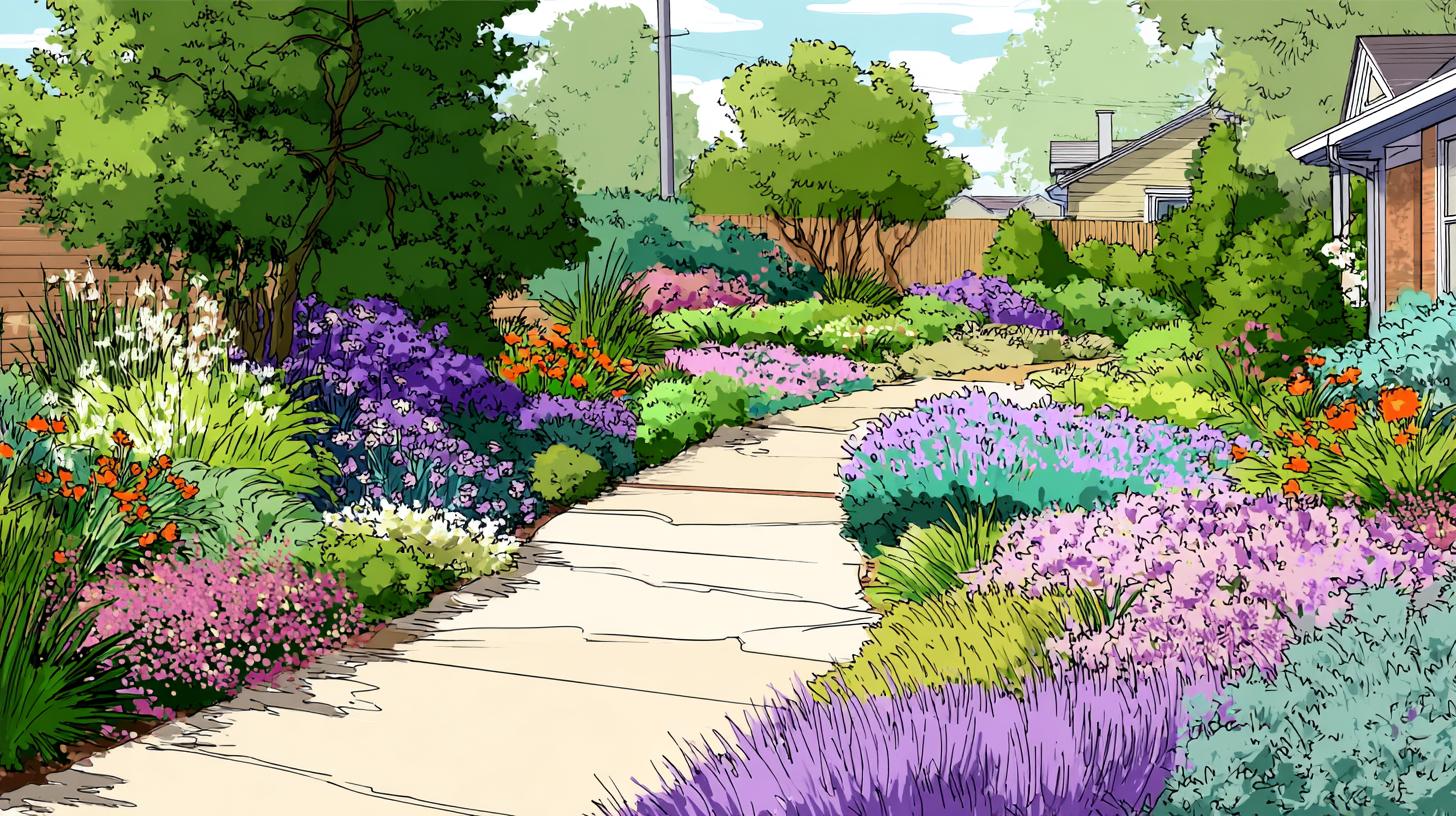The Quick Answer
Transform your garden soil without breaking the bank using kitchen scraps for compost, fallen leaves as mulch, and strategic cover crops. These seven budget-friendly methods cost under $50 total and create healthier, more productive soil within one growing season.
What We'll Cover
Why This Matters
Many homeowners discover their garden struggles stem from poor soil quality, not lack of effort. It's common to see yards where expensive plants fail to thrive, vegetables produce disappointing harvests, and grass grows thin despite regular watering. The culprit is often compacted, nutrient-poor soil that costs hundreds to replace professionally. But here's what most people don't realize: you can dramatically improve your soil using materials you already have or can get for free. These seven methods work because they address soil structure, nutrition, and beneficial microorganisms simultaneously—the three pillars of healthy garden soil.
Start Composting Your Kitchen Scraps
Composting transforms your daily food waste into nutrient-rich soil amendment. The average household throws away 30% of food purchased, which equals about $1,500 worth of organic matter perfect for improving soil.
Start simple with a basic pile system. Choose a spot 3-4 feet wide in partial shade. Layer brown materials (dry leaves, cardboard) with green materials (vegetable scraps, coffee grounds) in a 3:1 ratio. Add materials weekly and turn monthly.
What Actually Works
Many people struggle with indoor compost collection because bags leak and containers smell. The Exaco Trading Co. ECO 2.4-Gallon Kitchen Compost Collector solves both problems with its sealed design, built-in charcoal filter, and convenient countertop size that holds several days' worth of scraps.
Your finished compost should smell earthy and crumble easily after 3-6 months. Use 2-3 inches as mulch around plants or mix directly into planting beds. This single improvement can increase plant growth by 25-40% compared to untreated soil.
💡 Pro Tip: Speed up composting by chopping scraps into smaller pieces and keeping the pile as moist as a wrung-out sponge. This creates ideal conditions for beneficial bacteria.
Use Free Organic Matter from Your Yard
Your property generates valuable soil improvements year-round. Fallen leaves contain the same nutrients trees pulled from deep soil layers. Grass clippings provide quick-release nitrogen. Even weeds pulled before seeding offer organic matter.
Create leaf mold by piling leaves in a wire bin or corner of your yard. They'll decompose into rich, dark humus within 6-12 months. This process happens faster than regular composting because leaves have an ideal carbon-to-nitrogen ratio.
"I started saving all my fall leaves instead of bagging them for pickup. After one year, I had three wheelbarrows full of amazing soil amendment that my vegetables absolutely love."
- Sarah from Oregon
Grass clippings work differently. Use them fresh as nitrogen-rich mulch around heavy feeders like tomatoes and corn, applying no more than 1 inch thick to prevent matting. Mix older, dried clippings directly into soil before planting.
Even small branches and twigs serve a purpose. Chop them into 1-2 inch pieces and mix into heavy clay soil to improve drainage and add slow-release nutrients as they decompose over several seasons.
Test Your Soil to Work Smarter
Soil testing prevents wasted effort and money. Without knowing your soil's pH and nutrient levels, you might add amendments that don't help or even create imbalances that harm plant growth.
Most garden problems trace back to pH issues. When soil is too acidic (below 6.0) or alkaline (above 7.5), plants can't absorb nutrients even when they're present. This explains why fertilizing sometimes doesn't improve plant performance.
What Actually Works
Professional soil tests cost $25-50 and take weeks for results. The Luster Leaf 1601 Rapitest Test Kit provides immediate results for pH, nitrogen, phosphorus, and potash levels, giving you actionable information the same day you test.
Test different areas of your yard since soil varies even within small spaces. Take samples from 4-6 inches deep, mixing soil from several spots in each area. Test in spring before planting and again in fall to track improvements.
Use results to guide your amendments. Low pH needs lime (wood ash works too). High pH benefits from sulfur or organic matter like compost. Low nitrogen calls for compost or grass clippings, while phosphorus deficiency responds well to bone meal.
💡 Pro Tip: Test soil when it's slightly moist but not soggy. Wet soil gives inaccurate readings, while completely dry soil is hard to work with and may not represent normal conditions.
Plant Cover Crops for Natural Improvement
Cover crops work while you sleep, literally improving soil structure and fertility without ongoing effort. These plants fix nitrogen, break up compacted layers, and add organic matter when turned under.
Crimson clover excels in fall plantings, fixing up to 100 pounds of nitrogen per acre while its deep roots break through hardpan layers. Winter rye grows in harsh conditions and adds substantial organic matter. Buckwheat works for summer gaps, growing quickly and attracting beneficial insects.
What Actually Works
Choosing the right cover crop for your climate and soil type makes the difference between success and wasted time. The Sow Right Seeds Cover Crop Seed Collection takes the guesswork out with proven varieties, detailed planting instructions, and optimal seed ratios for maximum soil benefit.
Plant cover crops in unused garden areas during off-seasons. Broadcast seeds according to package directions, rake lightly to cover, and water until established. Most cover crops require no fertilizer or special care once growing.
"I planted crimson clover in my vegetable beds after harvest last fall. This spring, the soil was noticeably softer and my tomatoes grew twice as big as previous years."
- Michael from Virginia
Turn cover crops under 2-3 weeks before planting your main crop. This gives them time to decompose and release nutrients. For annual vegetables, this timing prevents nitrogen tie-up that can slow early growth.
Create Natural Fertilizers and Amendments
Common household items and yard waste create effective soil amendments. Used coffee grounds lower pH and add nitrogen gradually. Crushed eggshells provide calcium and help prevent blossom end rot in tomatoes and peppers.
Wood ash from your fireplace supplies potassium and raises pH, but use sparingly—no more than 10 pounds per 1,000 square feet annually. Banana peels buried around roses provide potassium for better blooms. Fish emulsion made from aquarium water feeds plants while disposing of waste water responsibly.
Create liquid fertilizer by steeping compost in water for 24-48 hours, then straining. This "compost tea" provides gentle, quick-acting nutrients perfect for container plants or giving struggling plants a boost during the growing season.
Epsom salt (magnesium sulfate) costs under $5 and helps plants with yellowing leaves due to magnesium deficiency. Mix 1 tablespoon per gallon of water and apply monthly during active growth. This works especially well for tomatoes, peppers, and evergreen shrubs.
Mulching with organic materials provides ongoing soil improvement. Shredded bark, straw, or even cardboard suppress weeds while slowly decomposing to add organic matter. Apply 2-3 inches thick, keeping mulch several inches away from plant stems to prevent pest problems.
Mistakes to Avoid
- Adding fresh manure directly to planting beds: Fresh manure burns plant roots and may contain harmful bacteria. Compost it first or age for at least 6 months.
- Working wet soil: Tilling or digging wet clay soil creates brick-hard clumps that take years to break down naturally. Wait until soil crumbles in your hand.
- Over-liming acidic soil: Adding too much lime at once shocks plants and can create nutrient lockout. Apply lime gradually over multiple seasons based on soil test results.
Bringing It All Together
Healthy soil is the foundation of every successful garden, and these seven methods prove you don't need expensive products to achieve it. Small, consistent efforts compound into dramatic improvements.
Start with one or two methods that appeal to you most, then gradually add others as you see results. Your plants—and your wallet—will thank you for taking this natural approach to soil improvement.


